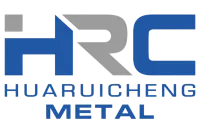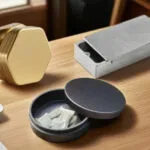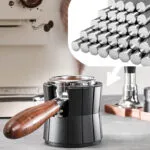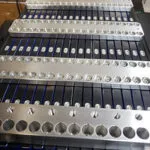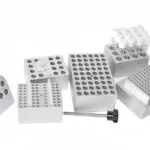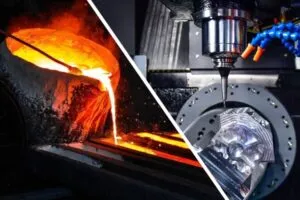People widely recognize aluminum for its lightweight, corrosion resistance, and affordability, making it the second most widely used metal in the world. However, untreated aluminum is prone to wear and tear and corrodes when exposed to the elements. This is where aluminum anodizing comes in. Anodizing can not only improve the durability of aluminum but also introduce color through dyeing to enhance the beauty of the product.
Key point
Aluminum anodizing is an electrochemical process that forms a protective aluminum oxide coating on the surface of aluminum products.
Anodizing improves the durability of aluminum, making it more resistant to wear and corrosion.
We can introduce color through dyeing in the anodizing process, which enhances the beauty of the product.
Anodized aluminum is widely used in various industries such as aerospace, automotive, and consumer goods.
We can customize anodizing to provide different levels of protection. We use decorative anodizing for aesthetics and hard anodizing for heavy – duty applications.
What is anodizing?
Anodizing is an electrochemical process that forms an alumina coating on the surface of an aluminum product. We widely use the process to improve the durability and aesthetics of aluminum products, providing higher wear resistance and corrosion resistance.
In the anodizing process, we make the aluminum product to be coated act as the anode in the cell.
What is the specific principle of anodizing?
Are there any environmental concerns associated with anodizing? Dip it in an electrolyte solution and apply an electric current. As a result, an alumina layer is formed on the surface of the product.
Alumina coatings have several advantages. It provides enhanced wear resistance, protecting the aluminum underneath from scratches, scuffs, and general wear.T he coating also improves the corrosion resistance of the product, making it suitable for a variety of environments.
How to control the thickness of the anodized film?
One of the advantages of anodizing is the ability to introduce color into the product. The alumina layer can be dyed to achieve a bright and long-lasting color effect. This makes anodized aluminum a popular choice for creating beautiful and customizable products.
Anodizing is a mature and widely used process that is widely used in various industries such as aerospace, automotive, construction, and consumer electronics. Its versatility and effectiveness make it the preferred method for improving the durability and appearance of aluminum products.
In short, anodizing is an electrochemical process that forms an alumina coating on the surface of an aluminum product. The process can improve wear resistance and corrosion resistance,a nd can show bright colors.A nodized aluminum has become a popular choice for various industries due to its durability and aesthetics.
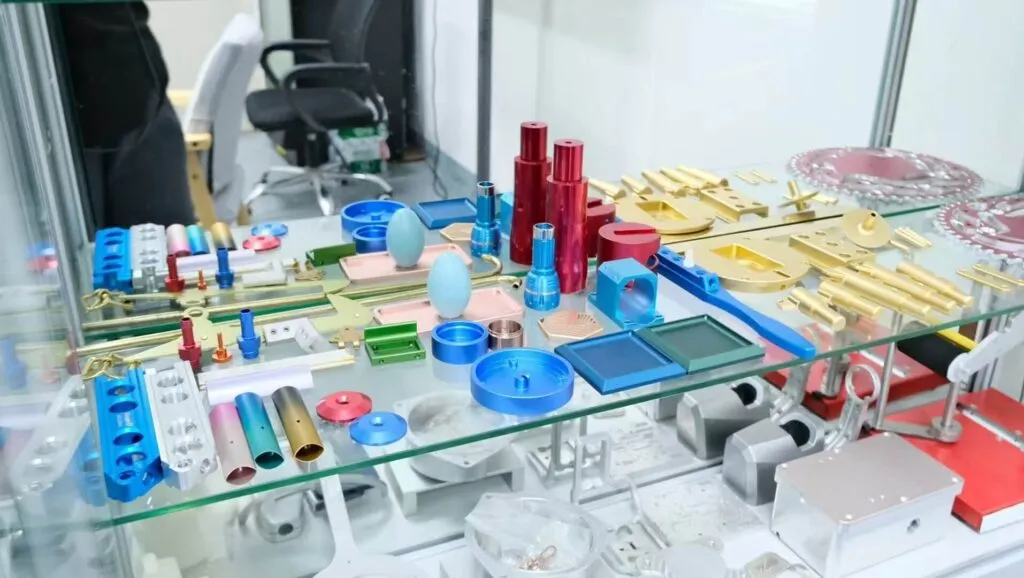
The Anodizing Process
The anodizing process involves several steps to achieve the desired results. Here are the key stages of the anodizing process:
- Cleaning: We thoroughly clean the aluminum product to remove any contaminants, such as dirt, grease, and oxide layers. This ensures a clean surface for optimal adhesion of the anodized coating.
- Preparation: Depending on the specific requirements, the surface may undergo pre-treatment processes such as degreasing, etching, or brightening . These steps prepare the aluminum for anodizing by removing imperfections and creating a suitable surface for the oxide coating.
- Anodizing: We immerse the prepared aluminum product in an electrolyte solution, such as sulfuric acid for Type II anodizing or chromic acid for Type I anodizing. Then we apply an electrical current, which causes the aluminum to oxidize and form the aluminum oxide layer on the surface.
- Coloring: If you desire, you can color the anodized aluminum product using various methods. You can dye it using organic or inorganic dyes, resulting in a wide range of colors and finishes.This step enhances the aesthetic appeal of the product.
- Sealing: To further improve the corrosion resistance and durability of the anodized aluminum,a sealing process is performed. Sealing closes the pores in the aluminum oxide layer, preventing the intrusion of contaminants and enhancing the overall performance of the coating.
Benefits of Anodized Aluminum
Anodized aluminum offers numerous benefits, making it a popular choice for a wide range of applications. The anodizing process creates a protective aluminum oxide layer on the surface of the metal, providing exceptional corrosion resistance and wear protection.
One of the key advantages of anodized aluminum is its high wear resistance. The aluminum oxide layer formed during anodizing is extremely hard, making the metal less susceptible to scratches, abrasions, and general wear and tear. This durability ensures that anodized aluminum products maintain their appearance and functionality over time.
Furthermore, we can tailor the thickness of the aluminum oxide layer to suit specific requirements. For decorative purposes, we can apply a thinner layer, allowing for vibrant colors and a polished finish. On the other hand, when enhanced protection is needed, we can anodize a thicker layer, providing superior defense against corrosion, weathering, and chemical exposure.
Another advantage of anodized aluminum is its ability to accept dyeing. During the anodizing process, the formation of microscopic pores in the aluminum oxide layer creates a surface that is receptive to pigments. This allows for the introduction of vibrant, long-lasting colors, resulting in an attractive and resilient finish.
“Anodized aluminum offers exceptional corrosion resistance, wear protection, and the ability to introduce vibrant colors through dyeing.”
Also, the thickness of the aluminum oxide layer adjusts easily. For decoration, a thinner layer works well for bright colors and a polished look. When more protection is needed, a thicker layer anodizes well. It protects better against corrosion, weather, and chemical exposure. Another advantage is its dyeing ability. During anodizing, tiny pores form in the aluminum oxide layer. This surface holds pigments well. So bright, long-lasting colors add easily, creating an attractive and tough finish.
In short, anodized aluminum resists corrosion and wear well. It can also have bright colors through dyeing. Besides, anodized aluminum has better insulation. The aluminum oxide layer is an electrical insulator. So it’s good for electrical applications where conductivity should be low.
